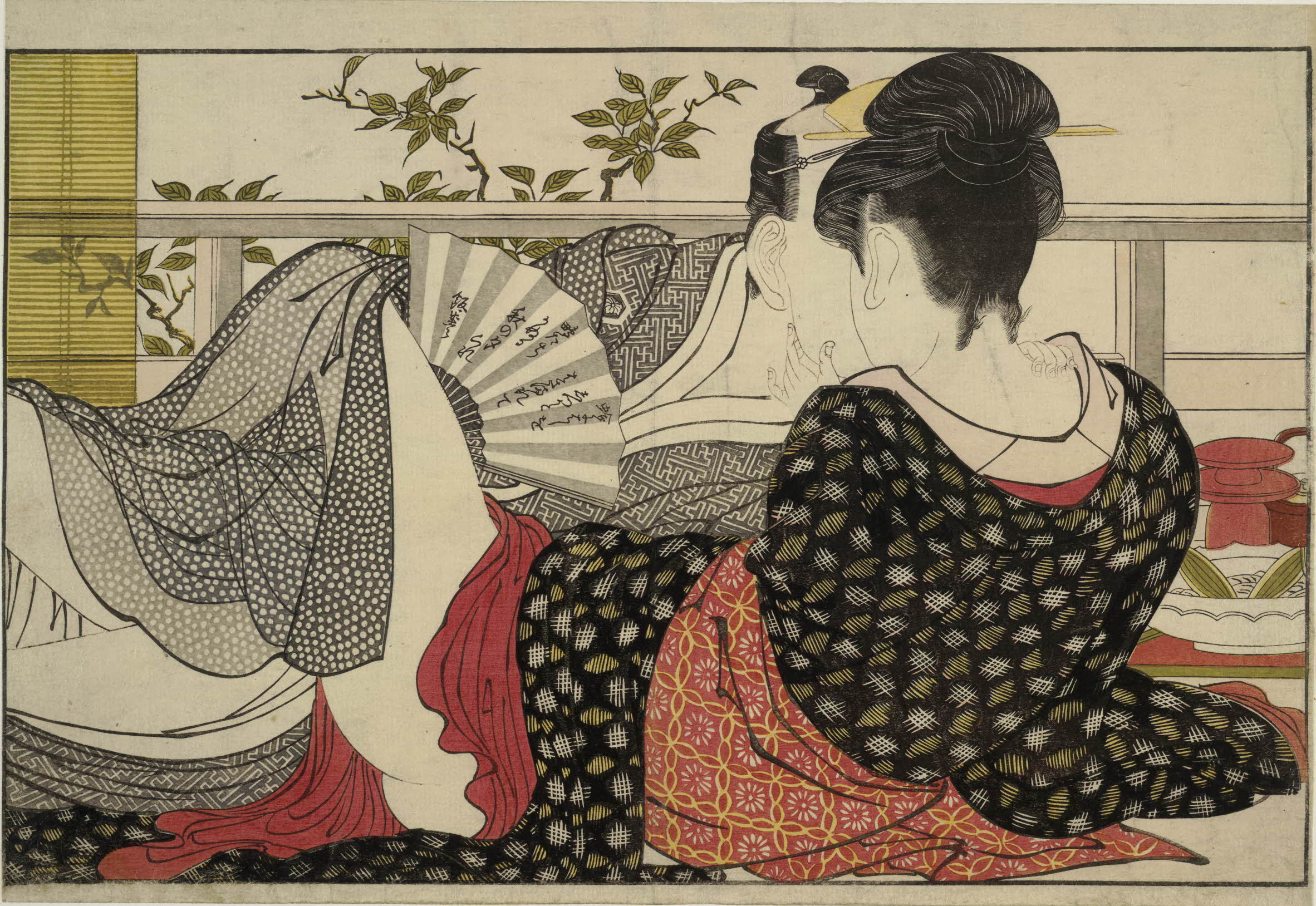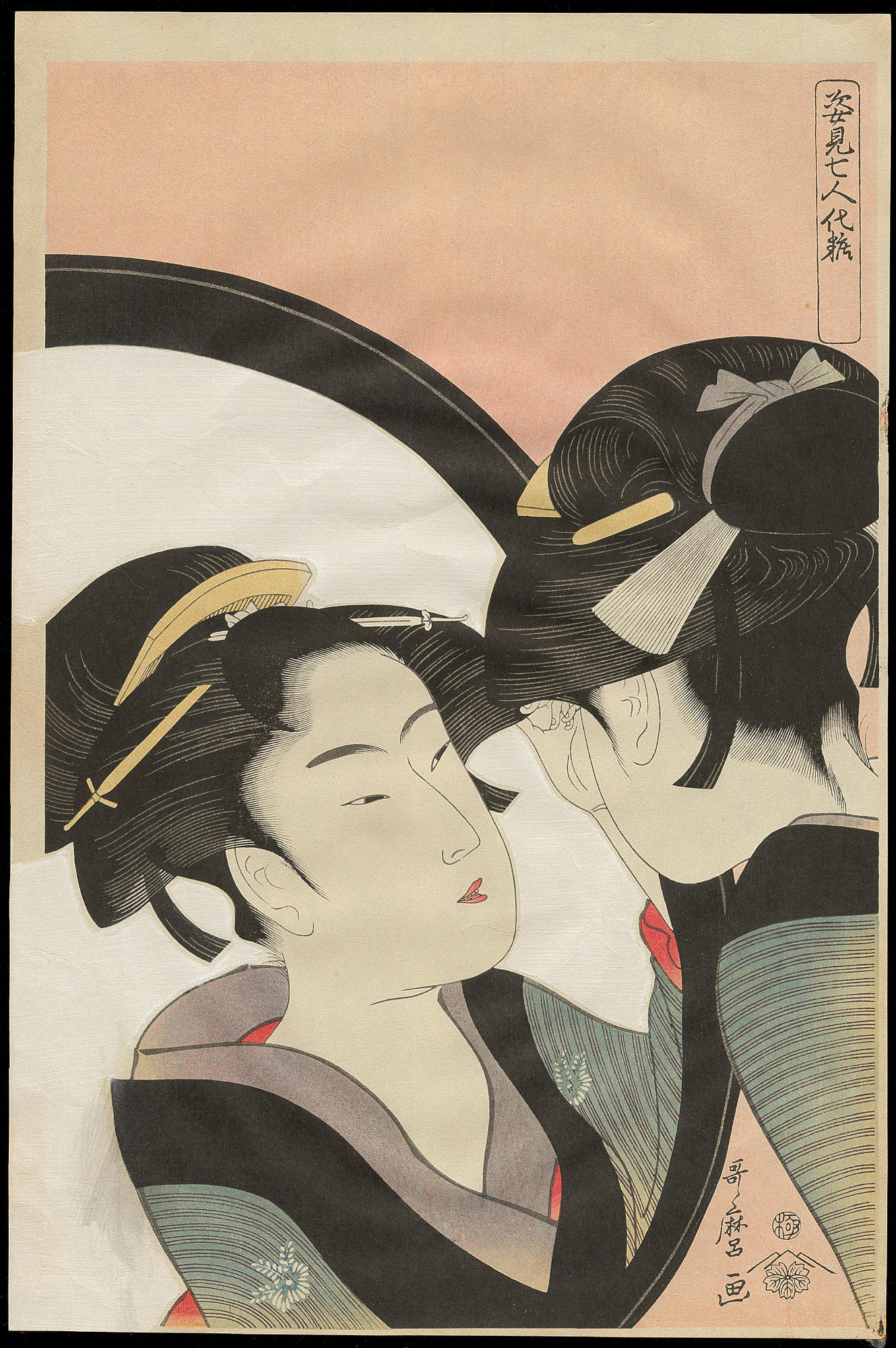Utamakura (Poem of the Pillow) is the title of a 12-print illustrated book of shunga (sexually explicit) pictures. Utamakura is a classical Japanese rhetorical concept in which poetical epithets are associated with place names. Utamaro takes advantage of the makura (pillow) portion to suggest intimate bedroom activity; the terms utamakura and makura-kotoba (pillow word[s]) are used throughout the book's preface.
Unlike other illustrated books of the time, Utamakura is devoid of accompanying text, and employs luxurious techniques such as embossing, the dusting of mica for a glittering effect, and bokashi, a technique by which gradations of color are achieved by applying varying amounts of ink to the printing block.
Shunga was probably enjoyed by both men and women of all classes. Superstitions and customs surrounding shunga suggest as much; in the same way that it was considered a lucky charm against death for a samurai to carry shunga, it was considered a protection against fire in merchant warehouses and the home. From this we can deduce that samurai, chōnin, and housewives all owned shunga. Records of women obtaining shunga themselves from book lenders show that they were consumers of it. It was traditional to present shunga to a bride. It may have served as sexual guidance for the sons and daughters of wealthy families.
P.S. Here you'll find all you must know about Japanese shunga (18+).


 Kitagawa Utamaro
Kitagawa Utamaro